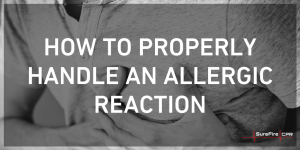The sun was shining this warm summer afternoon and people were outside enjoying it. A group of men had gathered near a local shopping mall parking lot to play a friendly game of basketball. The play was active, the temperature climbing and everyone thoroughly enjoying themselves…until the unexpected happened.
I was the nurse receiving the patient as medics brought him into the ER that afternoon.
“Collapsed while playing basketball down the street. Fortunately, someone grabbed the AED and he’s back,” the medic reported on arrival. The patient was sitting upright watching impassively as the paramedics transferred him onto the waiting bed in that tiny ER exam room.
I glanced at the patient who smiled at me and shrugged. You don’t know how lucky you are were my thoughts and I smiled back. We proceeded to examine him, text him and scan him for problems. Hours later, this gentleman left the ER with his wife and returned home without injury.
The heroic act of friends that day saved this man’s life. I witnessed the miracle of the AED (Automated External Defibrillator) and was impressed that someone was around the now-famous basketball game who knew how to use it.
Thank community training programs for this! Basic Life Support Training courses include skills required to use an AED appropriately. Fortunately, public businesses (such as the shopping mall), airplanes and other public arenas are stocking AEDs in easily accessible and visible areas, much akin to a fire hydrant. The small red box is generally identifiable by the AED letters stamped in white, in addition to a placard positioned visibly for easy location of the device. Finding the AED is one of the initial steps of CPR – a step anyone offering assistance during your initiation of CPR can do to help out.
Use of the AED is not relegated to medical professionals who are trained to recognized arrhythmias in an EKG or tracing. BLS trained and certified individuals have the skills necessary to recognize and utilize an AED during an emergent event. The design is brilliantly simple with its application just as easy. Following pictures and a computerized voice that instructs the user with each step allows the rescuer to deliver a life-saving “shock” when advised. In fact, that is exactly what happens. The device instructs where to place the pads then continues instruction with verbal commands.
Keeping a clear head and following instructions is required to use this device. Training to support its proper use provides the added support of familiarity and practice and is the appropriate measure to take prior to using an AED. Training received in community programs such as Sure Fire CPR in Orange County, California provides exactly the instruction you need to use an AED appropriately. Life saving defibrillation has been proven to be a major factor in improved outcomes from sudden cardiac arrest. With the introduction of the AED into public awareness, lives have been saved and will continue so. My patient will attest to that….after he finishes the next game of Round Robin!










